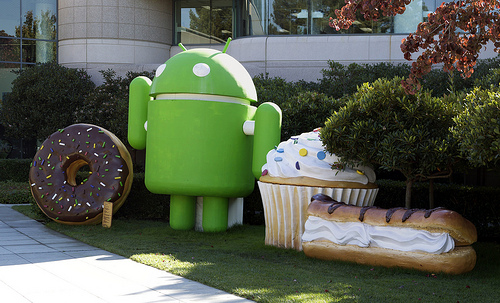Android Now #2 In Smart Phone Sales

The Android Robot and friends at Googleplex. Thanks to niallkennedy of Flickr.com and Creative Commons.
Last week the reports on Q1 sales for smart phones were released, and in conjunction with the ecstatic Droid hype over the last couple months, Google’s Android OS unseated Apple’s iPhone for the #2 spot in smart phone sales. This is a great indicator that Q2 will see an even larger market share attained by Android for smart phone sales. (I ordered my own Droid Incredible last week.) Given that the Android was only initially offered for sale just over six months ago, this is a very optimistic gauge for growth on the Android. Read more about the news here.
The recent success in smart phones equipped with Android is thanks is part due to Verizon’s extensive marketing campaign which downplays the capabilities of the #1 selling smart phone, the Blackberry, made by RIM. Android’s open compatibility is allowing phone manufacturers such as Motorola and HTC to develop new devices that run the software, and captivate consumers interest with sleek new offerings. Competition among phone manufacturers for consumer interest is driving innovation, as seen in the most recent release of the highly popular Droid by Motorola, and then less than two months later the Droid Incredible by HTC.
2010 is unfolding as the year that the mobile landscape is being redefined. Once a dreadfully slow and unreliable luxury item for only the most passionate tech junkies, access to the mobile web is bursting into the mainstream consumer demographic as ordinary people become entirely digital and connected to their lives online. The challenge remaining is how to capitalize on the rising usage of smart phones and the mobile web. First, the main demographic carrying around a smart phone today is: A male/female 25-44 who needs a productive yet playful phone and is looking for nice design combined with high performance. The next step is to determine the need that this demographic has when using their phone, and is not currently served or can be improved. Opportunities to enter the mobile industry are abundant, this is one of the few instances where time is still on your side to manifest the next popular phone app or mobile web service.

